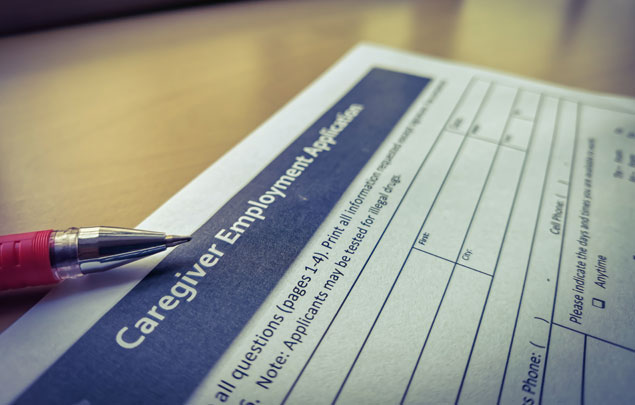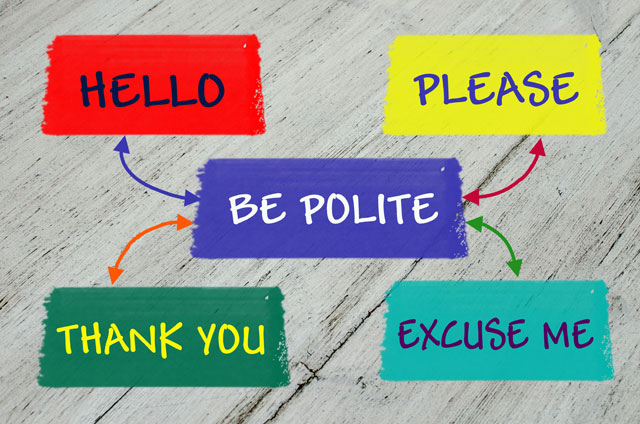1. Cell Phone - For your safety, and the safety of the child in your care, make sure you have a cell phone handy; borrow one from your parent or an older sibling if you do not have one.
2. First Aid Kit � You can buy one of these at your local pharmacy. It should have Band-Aids, bandages, gauze pads, antibiotic ointment, a cold pack, tweezers for removing splinters, and gloves.
3. A flashlight and some extra batteries
4. A notepad and pen
5. A marine whistle
6. Any games or books you may wish to use
7. Blank copies of the checklist from the last lesson
Make sure you have arranged for your ride to and from babysitting. Keep your parents informed when you need to go for your assignment, and when you have to be picked up. (Put your babysitting schedule on the refrigerator at home with your contact numbers, so your folks know where to reach you.)
Remember that babysitting is a partnership between you and the parents, so make sure you are well informed about the home where you are babysitting, as well as the children, before you start. Here are some of things you should do before you begin:
1. Dress comfortably � You may have to do a lot of running around with the kids, or you may have to go outdoors, so be prepared.
2. Arrive early � Get the Client Interview Form you filled out during the interview, and make sure everything is complete before the parents leave the home.
3. Find out where things are � You may want a quick tour of the house to know where things are, such as toys, books, diapers, changing table, food, laundry basket, dishes, and cutlery.
4. Safety and security � Check the following with the parents:
� Do the electrical outlets have safety covers?
� Is duct tape available to secure any cabinets that may have medication, cleaning supplies, or other hazards if they don't have child-proof locks?
� Is there a spare key to the house -- and where is it - in case you are locked out?
� Is there an alarm system in the house, and how does it work?
� Are there fire alarms and carbon monoxide detectors in the house?
� Are there rooms in the house that a child could accidentally be locked in � for example, a bathroom? Is there a spare key on the outside?
� Is there a safe room or panic room where you can go in the case of emergency?
� Are you allowed to answer the phone or the door while babysitting?
� Are you allowed to have food, watch TV, or use the computer?
5. Be confident - Get to know the kids:
� Talk to the children; get some information about them, their likes and dislikes.
� Tell them about yourself, and what you like and dislike about your school and any sport you participate in.
� If you are dealing with little kids who become insecure when their parents leave, always reassure them that their parents will return.
� Ask them what they want to do, and build your activities around what they want to do.
6. Use your checklist � Your Client Interview Form is your guide to helping you get through your babysitting chores. Use it constantly during your first days of babysitting, until you learn the routine.
7. Avoid bad habits � Children will mirror your behaviors, so always be aware of what you do and say to them.
� Make sure that the parents' instructions to kids is followed. You may be in charge, but perhaps the parent has a good reason for not letting a child say or do something you want them to do. You can always verify with a parent at a later time.
� Treat the children with respect and dignity at all times. Young children can be difficult to handle sometimes, but as a professional you must be able to handle situations with care, and without hurting their feelings.
� Do not watch TV, use the computer, or the phone excessively -- and always make sure you have your eye on the kids at all times.
- In addition to the safety measures mentioned in this lesson, what other things should you look for in the house that might be a safety hazard to young children? If things like small objects, plastic bags, toilets, bath tubs, and fireplaces come to mind, then you are on the right track.
- Formulate a plan to have the children help you tidy up as you go along. You can perhaps come up with a creative game and make it part of your routine. Reward them with their favorite story, or by playing an extra game with them.
- Think about giving a brief summary of your time with the kids when the parents return. Keep it simple, as parents may be tired and cranky and won't want to hear detailed explanations of your day, unless there is something significant to talk about.
- If there is a problem that needs to be discussed, tell the parent you will call the next day to discuss it. This will give you time to think about it, and also to talk to your own parents or an adult about it.
- Always ask the parents, before they leave, whether you should expect any visitors at the home.
- Never open the door to a stranger.
- Never say you are the babysitter, or that no one is home if someone calls. Simply say that the person they are calling for is busy, and get their number so he/she can return the call. (You can also let the call go to voice mail.)
- Make sure that all the doors and windows are locked before the parents leave the home.
- Learn how to work the alarm system in case you accidentally set it off.
Depending on the children's age, and what toys and books they may already have, you may want to consider bringing:
- Activity or coloring books and some crayons
- Children's video and music CD
- Stuffed animals, dolls, toy cars or trucks
- Board games
- Playing cards
- A bubble maker
Babies and toddlers love when people talk, sing, read, play, and give them hugs. This is how they learn and grow. These activities are normally recommended for babies over the age of 9 months. Remember, smaller children will require much more care and attention.
So here are some activities that will keep them entertained:
Peek-a-boo � Babies love the game of peek-a-boo. You hide your face in your hand, so the baby can't see you. Then you remove your hands quickly from your face and the baby screams in delight when your face reappears. You can say, "Peek-a-boo! I see you!" as you do this.
Blanket ride - Give the baby or toddler a ride on their favorite blanket. Put the child on the middle of the blanket and drag him/her carefully around the room.
Roll the ball - Get the child's favorite ball. Sit down in front of the child and roll the ball over. Then ask the child to roll the ball back to you. You could ask the child to roll the ball faster and faster to you, and then, whoosh, it's gone. You can hide it and play a little game of now-you-see-it, now-you-don't.
Reading baby books � Choose books with a lot of colorful pictures and words that the child understands, so he/she can follow along with you. Choose children's picture story books and Easy Readers, which you can get from a library.
Let's dance � Put on a tape with nursery rhymes or children's songs and dance with your baby or toddler. They will love it, and it's also great exercise for both of you.
Look outside � Sit by a patio door or a window with the child and watch what goes on outside. You can look out for birds, animals, or clouds, or watch the rain make puddles. Ask the child about what he/she sees. Ask the child to name the birds or animals, and to look at the different cloud shapes as they race by.
A quick hug - Sometimes all a baby or toddler needs is a little hugging to comfort them, to tell them they are great, or simply to tell them you care. Take time to give them a hug, especially when they are incredibly good, or when they have won in a game, or have done well in an activity.
Activity books � There are some great activity books that children will jump right into from author Deri Robins. Some of these books include: Christmas Fun, Halloween Fun, Birthday Fun, The Great Pirate Activity Book, and The Kids' Around the World Cookbook. There are also step-by-step books -- Making Prints and Papier Mache -- by the same author. Look for these books in your local library, or ask the parents to get them for you if the kids are interested.
Card Games - Some popular card games for kids are Snap, Go Fish, Concentration, and Blackjack. If you want to learn more card games, ask your parent to get you one of these books:
� Card Games for Kids: 50 Fun Games for Your Children, by Adam Ward
� The Book of Cards for Kids, by Gail MacColl
Build a house of cards, or ask the kids to invent their own game if they get bored.
Indoor basketball - Get a small plastic basketball hoop and ball. You should be able to find this at your local dollar store. Set it up in the activity room, and see how many baskets the kids can make.
Hide-and-Go-Seek � This is a very popular game with older children. However, make sure the rules are clear as to where the kids can and cannot hide before beginning the game.
Other activities - Charades, making soap bubbles, popular board games, and even computer games can be used to keep the children busy and entertained.
- Vary your activities with the children from day to day so they do not get bored.
- Spend some time thinking about, and planning, your activities for the next time you babysit.
- Get the children's input as to what they would like to do the next time you come around.
- Make sure that any activity does not result in incredible amounts of cleanup for yourself or the kids.
- Make sure the activities are safe, and that nothing in the house can be damaged during the activities.
- Make sure that the computer games you play, and the time spent on the computer, is approved by the parents.
- Finally, but most importantly, make sure you and the children are safe during activities.
This part of the article covers what to do when things do not go the way you planned. Here are some tips to make sure you maintain discipline while babysitting.
Taking charge - First and foremost, you should make sure the children understand that you are in charge.
Temper tantrums � A child can have two kinds of tantrums because:
� They want their own way with something, or
� They are incredibly frustrated with something they are trying to do, but cannot get it right.
In the first case, show the child that you do not encourage this type of behavior. Do this by either ignoring the child, or moving a short distance away. Children calm down when they know an adult will not give in.
In the second case, help the child in whatever they are trying to do. Sit down in front of the child and make eye contact. Talk to the child and calm him/her down. Say things like, "It's all right, can you tell me what you want?"
- Always stay calm when temper tantrums happen.
- Try to figure out why the child has a tantrum.
- Once you know why the tantrums happen, you can plan ahead to avoid them.
For example: If children behave badly because they have nothing to do and are bored, then build some fun activities around them.
Arguing and bickering - Just like temper tantrums, there could be many causes for arguing and bickering between children. Some of them could be:
� They may have been playing together for too long.
� They could be tired, or hungry, or both.
� They may be terribly bored.
� There could be some other cause, like a favorite toy, book, or TV program that sets them off, or
� They may just want your attention.
When you know what might set the kids off, you can easily find ways to stop arguments and bickering before it happens. Here are some ways you can do this:
- If you feel there is an argument coming on when kids have been playing for too long, you may want to suggest they take on different activities; one could use the Play-Doh or the Lego blocks, while you read to the other. Share equal time with each child, so the other won't feel left out. Always say something like, "Now I am going to let Dillon play with the Play-Doh while I read to you, and we can then switch places after I have finished."
- If they are tired or hungry, give them a quiet activity and a healthy snack.
- If you feel they are bored, try to simulate them with a game or activity that will make them use their minds. Lego blocks and Play-Doh are excellent.
- If a favorite toy, book or TV program is involved, always encourage them to talk among themselves and resolve the problem. If they can't resolve a problem without your help, come up with a plan that is fair to everyone, and make them stick to it.
- Finally, be around them when they need your attention; talk to them, humor them, tell a joke, or make funny faces. This should calm them down.
Time out time � Sometimes you may have to give them a time out so things calm down. Inform the children how long they have to take a time out. Make them go into separate rooms if you have to, or have them sit quietly in different corners of a room. Time out can also be effective by having the child sit at a kitchen table doing nothing at all. A good rule of thumb for the length of a time out is one minute per year of age. For example, a 3-year-old would be in time out for three minutes.
A final word of advice � Be kind, firm, and fair. Add some humor to your babysitting, and you will be well on your way to being the sitter every child wants.
Sometimes nothing may seem to work with some kids. In such a case, it is always better to talk to the parents and tell them you just don't think the job is right for you.
Just as you should dress comfortably for your babysitting assignment, kids need to be comfortable and should wear practical clothing for both indoors and outdoors.
Here are some things to remember:
� Kids can spill things on themselves or have little accidents, so make sure you know where their clothes are, because you may have to change them in a hurry.
� If you are taking the children outside, make sure you pack a change of clothing and a light jacket in case it suddenly gets cold or wet. You may also want to check the weather in your area before going out.
� Change a child into a more comfortable outfit to help the child cool down if it is warm, or to stay warm if it is cold.
� Socks and rubber shoes are great for outdoors. Flip flops or sandals can be worn at home.
� Make sure the children are not wearing anything in their hair or clothing that can snag onto something while they are playing.
� For babies or toddlers in potty training, it is always good to have pull-on type pants.
1. Before you change a baby, prepare by having a fresh diaper, baby wipes, a towel and powder close by. Remember, once you have a baby on the changing table, you cannot leave the baby unattended.
2. Put the baby on the changing table and open the flaps of the soiled diaper.
3. Leave the soiled diaper on while you clean the child's genital area using a clean wet cloth or towel. (It is recommended that you wipe from front to back to avoid possible infection.)
4. Lift the baby's bottom off the table by holding the baby gently by the ankles with one hand, and carefully remove the diaper from under the baby with the other.
5. Fold and place the soiled diaper away from the baby.
6. Wipe the baby thoroughly and apply baby powder or lotion.
7. Lift the baby's bottom (again, by holding the baby gently by the ankles) and slide a new diaper under the baby. Then fasten the flaps from the back to the front of the diaper.
8. Dress the baby in clean clothes and place the baby in a safe place while you wash and tidy up the changing area.
A child between the age of 2 and 3 years can easily understand simple instructions and is, therefore, ready for toilet training. Here is what you need to do to help a child while toilet training:
-
- You should be able to tell if a child wants to use the bathroom (even if they don't tell you) by watching their facial expressions or body language.
- If they tell you they have to go, take them to the bathroom right away. Children generally wait until the last minute to tell you.
- If you are taking care of a second child, make sure that child is in a safe area, before you take care of the first one.
- If a child cannot go potty once they are in the bathroom, don't keep them there for too long.
- Always praise a successful effort and encourage the child to do better next time if the toddler has a little accident in his/her pants.
- Help a child clean up, and wash the child's hands before leaving the bathroom. Make sure soap is used when washing the child's hands, and yours.































